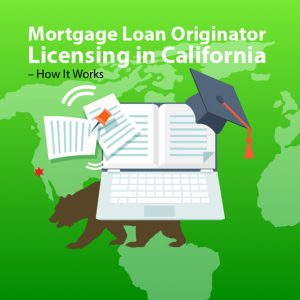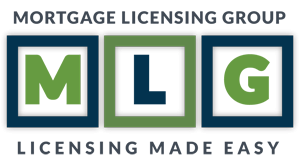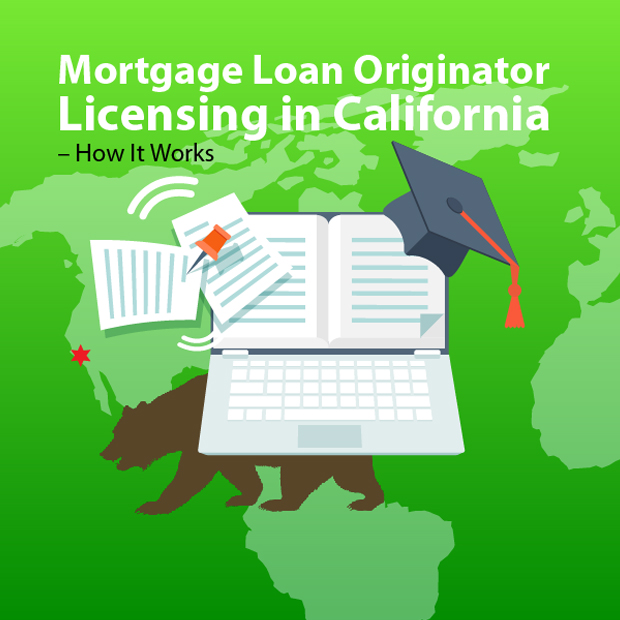California Mortgage Loan Originator Licensing – How It Works
In order for Loan Officers in California to legally advise borrowers on available loan programs, discuss rates, suggest a lender or originate a loan they must first obtain their California Dept. of Business Oversight (DBO) Mortgage Loan Originator (MLO) License through the Nationwide Multistate Licensing System (NMLS).

Before you can get started in the NMLS, you need to create an account. Once you complete this process and have an account set up, then it is time to focus on your pre-licensure education. Typically, you will need to complete a pre-determined number of credit hours through a state-run program or complete an NMLS-approved course. However, going through the coursework is not enough. When you take your licensing exam, your score needs to be 75% or above to be considered passing and able to continue the process to become a licensed mortgage broker in California.
After all the education and testing, you formally apply for your license through the NMLS system. This application is where you will answer any questions related to net worth, bonds, insurance, and more. The state will use this application to determine if you are qualified to hold a license in California. Security is also a critical part of the process, since you will be working with individuals and access their personal information, such as social security numbers, financials, and credit history. In California, that means passing a background check, being fingerprinted, and paying all related fees for these services. Below, we will discuss how long the process takes and what is involved.
Finally, after all of these steps have been completed and you have paid the necessary bonds and fees to the state of California, you will have to take the step of associating your NMLS account with your employer. Let’s dive into each of these steps and walk you through what is involved and what options are available if you need to retake a test or complete additional education requirements.
Steps Overview:
- Apply online for an NMLS account and ID number
- Complete your Pre-License Education
- Pass your licensing exam with a – 75% Passing Score or better
- Apply for a license with the NMLS
- Complete your background checks and pay all related fees
- Associate your NMLS account with an employer (Sponsor)
Steps Explained:
The first step on the path to becoming a fully licensed MLO requires applicants to complete 20 hours of pre-license education through a NMLS System – approved provider. These classes can be done online and include 3 hours of Federal Law, 3 hours of Ethics, 2 hours of Non-traditional Mortgage Lending plus 12 or more hours of electives. This may be in addition to required California content.
Upon completion of your pre-license training, you’ll need to contact a state-authorized testing facility to schedule and you’re your California state licensing exam. This exam is computer-based, multiple choice, 75% or better passing score. You will have to wait 30 days to retest if you fail the first test and another 30 days if you fail the second test. There is a 180 day waiting period if you fail a 3rd time.
With a passing grade recorded and visible in your NMLS profile, you can now apply for your license.
Subsequently, you are required to provide fingerprints and submit to a background check through the NMLS. You will need to make an appointment through a state-approved fingerprinting service. The process generally takes 5 to 15 minutes.
Once your license application is approved, it will remain inactive until it is properly associated with the lender that is sponsoring you. Upon association, congratulate yourself, you are now authorized to lend in the great state of California.
Maintenance Required:
California MLOs must renew their licenses by December 31st, of each year.
The Mortgage Licensing Group, Inc. – we’re here to help if you need a hand navigating the complexities of the California DBO licensing process.

